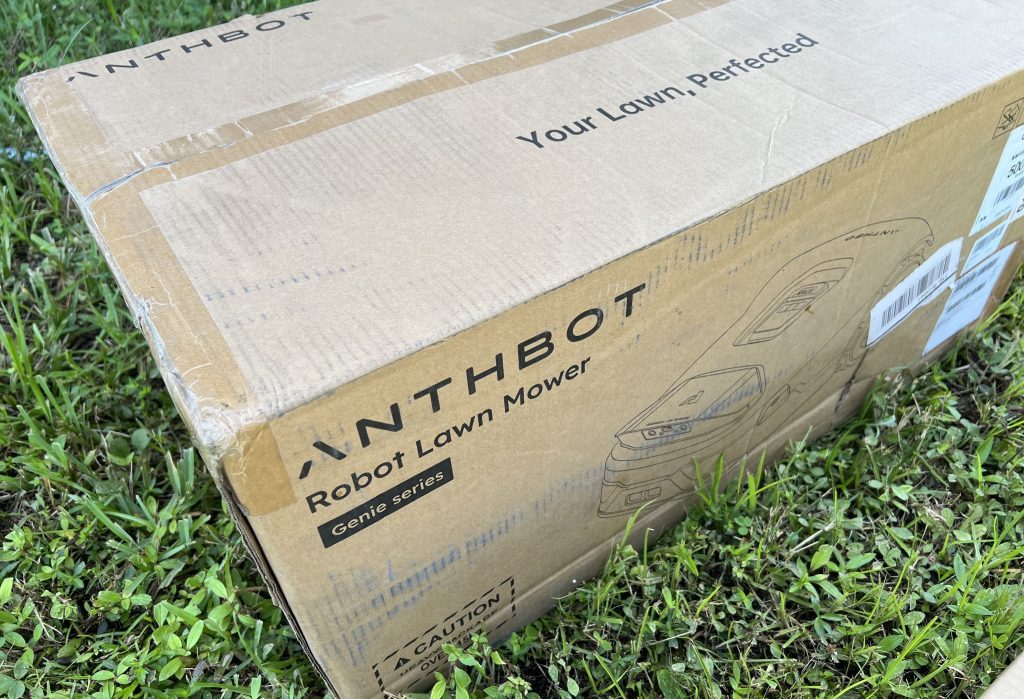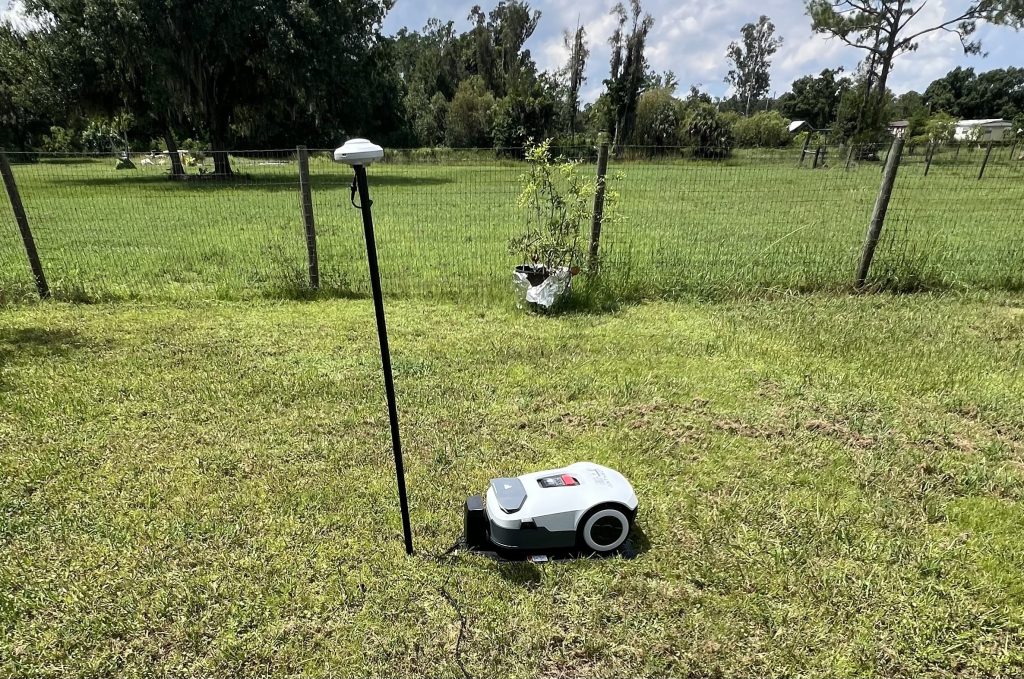
The Anthbot Genie 3000 brings automated mowing tech to your backyard without the need for old-fashioned perimeter wires. It has GPS-grade precision and AI-powered vision, and I got to check out how well it works. With a mix of impressive strengths and a few growing pains, it’s a compelling entrant in the smart‑lawn space worth a closer look.
Setup and specs
There are a few models in the lineup, ranging from $699 to $1,399. I was testing the larger battery version since my parents have some land, and the extra battery makes quicker work of larger plots.
Unboxing the Genie, you’ll find the mower, charging base, RTK GPS station with pole (the mushroom-looking thing), power cables, spare blades, tools, and a quick‑start guide. Unlike some electronics I’ve set up, the quick start guide was actually really well laid out and useful.


The three models in the Genie line:
- 600 – up to ~600 m² (0.22 acres)
- 1000 – up to ~2,000 m² (0.49 acres)
- 3000 – up to ~3,600 m² (0.89 acres)
The 3000 bumps up the battery to 10 Ah, but they all share the same core specs: a 20 cm (7.9 “) cutting width, adjustable electric deck height (30–70 mm or 1.25 to 2.75 inches), IPX6 waterproofing, and the ability to handle steep slopes, though my Florida testing didn’t exactly put the hill-climbing claims to the test.

Navigation and mapping
This is where the Genie shines. The combo of full‑band RTK GPS plus four AI‑driven cameras enables wire‑free navigation. That means no boundary cables, freeing the mower from the biggest problem with old-fashioned alternatives. Instead, GPS-based boundaries set the limits and your mower is free to do its thing without worrying about a boundary wire breaking one day and your mower making a run for the county line.
Mowing occurs in mostly clean, straight lines, avoiding the chaotic randomness older robot mowers often exhibited. It did seem to have a few areas where it missed on the first run, though it actually went back and got them (mostly), and that got better on subsequent mowing sessions.
Obstacle avoidance is solid. Within its 300° camera field, it claims to detect upwards of 1,000 common objects, sidestepping everything from garden hoses to pets. For me, the occasional potted plant or other obstruction in the yard was pretty easy for the robot to spot.
There are even headlights that seemed quite bright at night (and the very quiet electric mowing meant that it doesn’t disturb anyone when mowing at night).

App and smart features
The Genie app is used for setup and lets you define many different mowing zones, draw no‑go zones, tweak cutting height, schedule operations, and monitor battery and progress live, even when you’re away. During setup, I did find that I had to move the mower closer to my router for it to successfully update its firmware, but afterwards it was fine just stealing some signal that leaked out the walls of the house. I guess for the bigger download, it wanted the stronger signal closer to the router.
There are also anti‑theft features, including device‑binding to your Wi‑Fi and account, and a PIN lock so that someone else can’t just take and use your robot. That may be a concern if you live in an area with lots of neighbors, but out in the boonies, I don’t think anyone is looking for robo-mowers.


Performance and real-world use
The first thing that impressed me about the Genie is how quiet it is. They say it runs at about 58–66 dB, whisper-quiet under normal conditions. You can literally hear the individual grass blades being cut – something I’ve never heard before in all my gasoline-powered mowing years.
The battery seems to last for around 450 to 500 m2 of mowing, or around 3-4 hours, depending on how thick the grass is in that section. Then it returns home to recharge and starts up again where it left off. The mowing width might seem hilariously narrow, just 7.9 inches. But since you’re not actually the one mowing, it doesn’t really matter. My robotic vacuum also has a very narrow vacuum width, but I’m not the one walking around vacuuming, so what do I care? The passes all seem straight and good-looking, so you still get the nice lawn stripes look, though they’re a bit narrower.
The robot performs quite well, and it fulfills my goal which was to make it easier on my 70-year-old parents. It’s not perfect at edging, but if my dad can do 3 minutes of cleaning up along the fence line once in a while instead of an hour of lawn mowing, that’s a major improvement for him.
I don’t know how long these little razor-style blades will last, though they’re pretty cheap and easy to swap out. And I do wish the company made the cable longer between the RTK mushroom and the mower’s base station, so you can get the RTK out a bit further if you need it, but I found a spot that seemed to work for optimal signal for me.
I would say that the Genie 3000 is great for anyone who wants an easy setup process and wire-free operation. There’s no boundary wire to install or to check for breaks. It just works (as long as you have a clear view to the sky for the satellites). But if you’re trying to mow several acres, this little guy probably isn’t the one for you. Anything up to around 3/4 of an acre is where it will shine.
Now I just need to find something that can handle several acres in the pasture behind the backyard…

FTC: We use income earning auto affiliate links. More.












